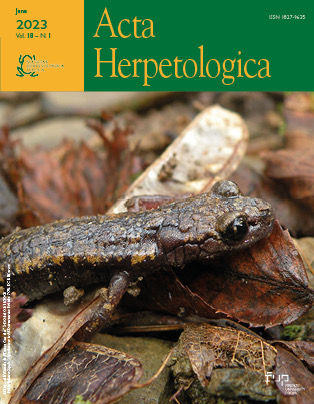Screening of Ophidiomyces ophidiicola in the free-ranging snake community annually harvested for the popular ritual of San Domenico e dei Serpari (Cocullo, AQ, Italy)
Published 2023-07-01
Keywords
- SFD,
- snakes,
- health monitoring,
- Cocullo,
- Abruzzi (Italy)
- Ophidiomycosis,
- age at maturity ...More
How to Cite
Copyright (c) 2023 Ernesto Filippi, Daniele Marini, Gianpaolo Montinaro, Francesco Origgi

This work is licensed under a Creative Commons Attribution 4.0 International License.
Abstract
In the Abruzzi village of Cocullo (Italy), each year, on May 1st, local snake hunters (known as Serpari) display colubrids, captured in the wild, to commemorate the ancient ritual of San Domenico. The ascomycete Ophidiomyces ophidiicola (Oo) is the causative agent of ophidiomycosis, an emerging disease with sublethal effects. Skin lesions, such as dysecdysis, edematous, crusty or necrotic scales, swellings, nodules, and ulcers, are the most common clinical manifestation of the disease. The pathogen and its associated disease are well characterized in wild snakes in North America, whereas broad screenings of free ranging wild ophidians in Europe are rare. In 2019, as part of a multi-year snake health monitoring project, all the Cocullo ophidians were carefully examined for integumentary affections and those showing signs consistent with ophidiomycosis were dry swabbed on the skin and on any visible cutaneous lesions with a single applicator. The extracted DNA underwent a broad-range panfungal PCR targeting the D1-D2 region, as well as two conventional PCRs specific to the ITS2 and IGS regions of Oo DNA. Twenty-three out of 129 snakes (13/82 Elaphe quatuorlineata; 7/31 Hierophis viridiflavus; 3/15 Zamenis longissumus; 0/1 Natrix helvetica) resulted clinically affected, but no specific Oo genomic DNA was detected by PCR. The Cocullo ritual celebration provided a unique opportunity for the first systematic testing of a large sample size of a local snake community for the monitoring of this pathogen in Italy.





